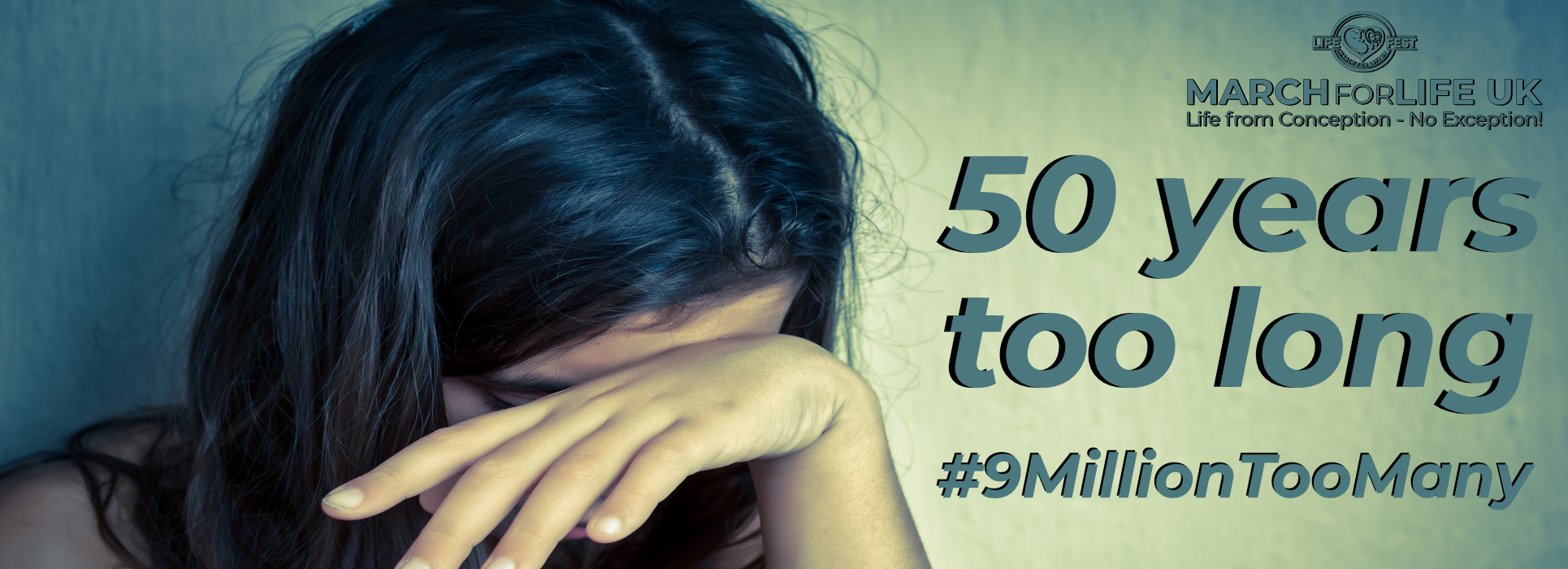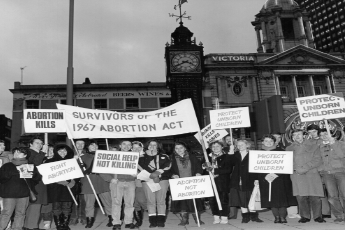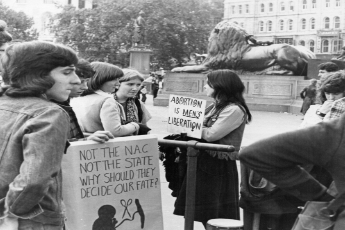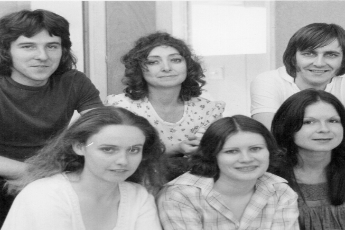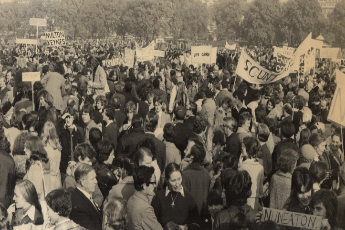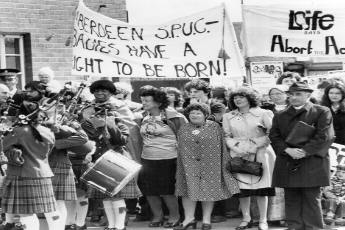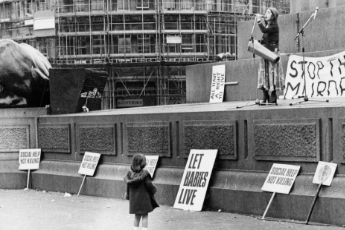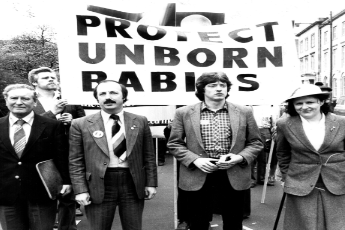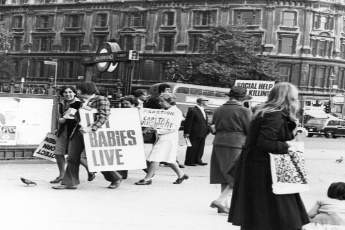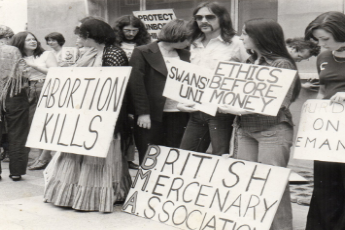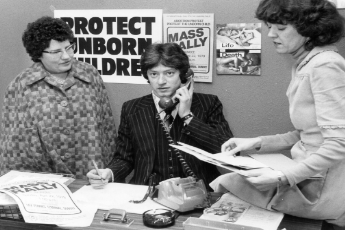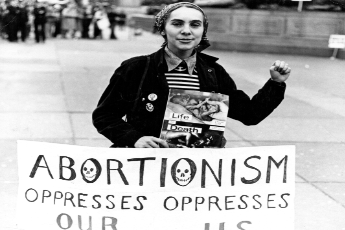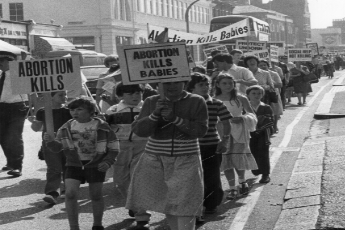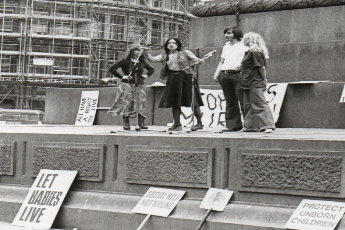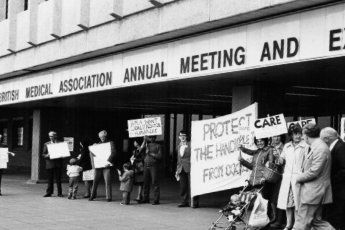The Early Pro-Life Movement in the UK
The Abortion Act was introduced by the Liberal MP David Steel as a Private Member’s Bill. The Act allowed abortion on a number of grounds. After three readings, the Act was eventually passed on 27 October 1967 and came into effect on 27 April 1968.
Before the bill was passed there were many committed pro-life people who lobbied and campaigned against such a change in the law. Once the bill had been passed pro-life activity in the UK gained great momentum. Many more pro-life groups and organisations were formed which attracted huge numbers of supporters and volunteers.
Thousands turned out to make a stand for life, 600 students came together to march from the BMA to Downing St to protest against abortion. The photographs below show just some of the protests and rallies that took place in the UK as early as 1976.
The History of March for Life
On January 22, 1974 thousands of pro-lifers participated in the first March for Life to stand up for the unborn. An inspiring rally was held as Members of Congress announced pro-life legislation and expressed their support for the pro-life cause. The program concluded with a “Circle of Life” march around the Capitol, followed by participants lobbying their Members of Congress.
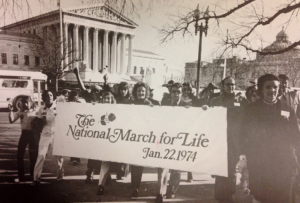
Soon after that first March in 1974, it became apparent that congressional protection for the unborn was not on the horizon. Instead of sitting on the sidelines, Nellie decided that the March for Life, rather than the originally anticipated one-time event, would instead be held every year until Roe v. Wade was overturned. That year, the March for Life became incorporated as an action-oriented non-profit organization, and the “Life Principles” were developed as the underlying guideline of the organization.
With Nellie’s leadership, the March continued to grow and develop each year. Nellie was an ever-faithful voice for the most vulnerable in society, working to protect the preborn until her last hours of life. While each March for Life has faced a unique challenge or obstacle, the numbers of participants have continued to grow.
Under the leadership of Nellie, the March grew from 30 concerned citizens gathering in a Washington D.C. home to the present day march that draws hundreds of thousands of people from all fifty states and countless countries!
Inspired by the example of pro-life activists in the UK in the 1970’s and 1980’s and also by March for Life in America, in 2012 a small group of people in Birmingham UK decided to hold a pro-life walk of witness as a half-way event for their 40 Days for Life campaign. The team were pleasantly surprised when around seventy people turned up to join in with the walk of witness from St Michael’s Church on Moor St to Victoria Square. As they walked through the city centre, they held bright yellow balloons printed with the simple message of LIFE, sang hymns and prayed for a culture of life.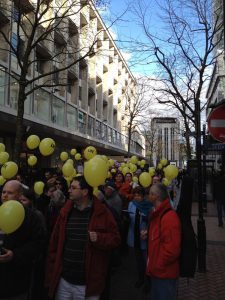
Following the success of this public witness to life and bolstered on by an increasing interest shown in a further March the following year, the team decided to advertise the next March on social media and to name the event, March for Life UK. Again the team were delighted to find that interest had grown with people coming to attend the March from all over the country, they estimated that in 2013, around 400 people came to St Chad’s Cathedral in Birmingham and marched for life.
Since then March for Life UK has grown each year doubling in size, in 2017 despite the rain we saw our biggest crowd to date of 4000 people!
On 27th April 1968 the Abortion Act that was passed in October 1967 came in to effect and since then almost 9 million babies have lost their live to abortion. On 5th May 2018 in Parliament Square let’s rekindle some of the zeal that the pro-life movement had in the 70’s and come together as one united voice to march for life together so that hearts and minds are changed about the greatest violation to human rights in history!
50 Years of Abortion in the UK
